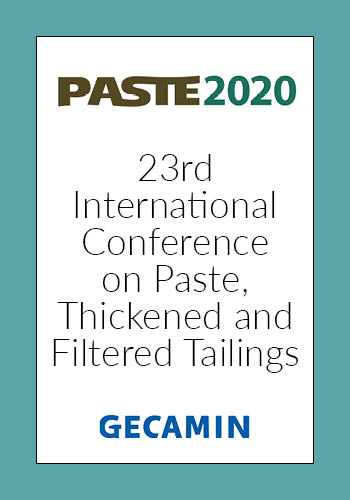Barometric Column Filtration vs. Filtrate Pump Filtration Comparison - Case Study

|
Authors: Silva, M; Rettore, A |
DOI https://doi.org/10.36487/ACG_repo/2052_86
Cite As:
Silva, M & Rettore, A 2020, 'Barometric Column Filtration vs. Filtrate Pump Filtration Comparison - Case Study', in H Quelopana (ed.), Paste 2020: 23rd International Conference on Paste, Thickened and Filtered Tailings, Gecamin Publications, Santiago, https://doi.org/10.36487/ACG_repo/2052_86
Abstract:
The filtering of sandy tailings from the reverse cationic flotation processes and the subsequent stacking of these tailings has shown to be a very strong trend in Brazilian iron ore mining, especially after accidents involving geotechnical structures known as tailings dams, but also due to concern of mining companies to develop a disposal technique that is more complacent with the environment and the surrounding society. In order to develop the sandy tailings filtration project, a fundamental requirement was the correct choice of filtration technology among the many existing ones. For the material object of this study, the filter with vertical discs presented itself as the most productive due to factors such as granulometry, specific surface of the material and the humidity required in the filtration product. Several exploratory and material characterization tests were carried out for this purpose. Disc filters have the principle of operation linked to the difference in atmospheric pressure and the vacuum pressure induced by pumps. The vacuum must act on the filtering screens next to the filter heads and, in order not to drop the yield, the system must be sealed hydraulically. As previously mentioned, there are basically two ways to hydraulic seal the system. The first and most common in Brazilian iron ore filtration is carried out through barometric columns and the other is using filtrate pumps installed directly in the vacuum receiver of the filtration facilities. The decision of which method to use has major implications for the design of the filtering installation and the comparison between the two conditions mentioned is the objective of the present work.
© Copyright 2025, Australian Centre for Geomechanics (ACG), The University of Western Australia. All rights reserved.
View copyright/legal information
Please direct any queries or error reports to repository-acg@uwa.edu.au
View copyright/legal information
Please direct any queries or error reports to repository-acg@uwa.edu.au